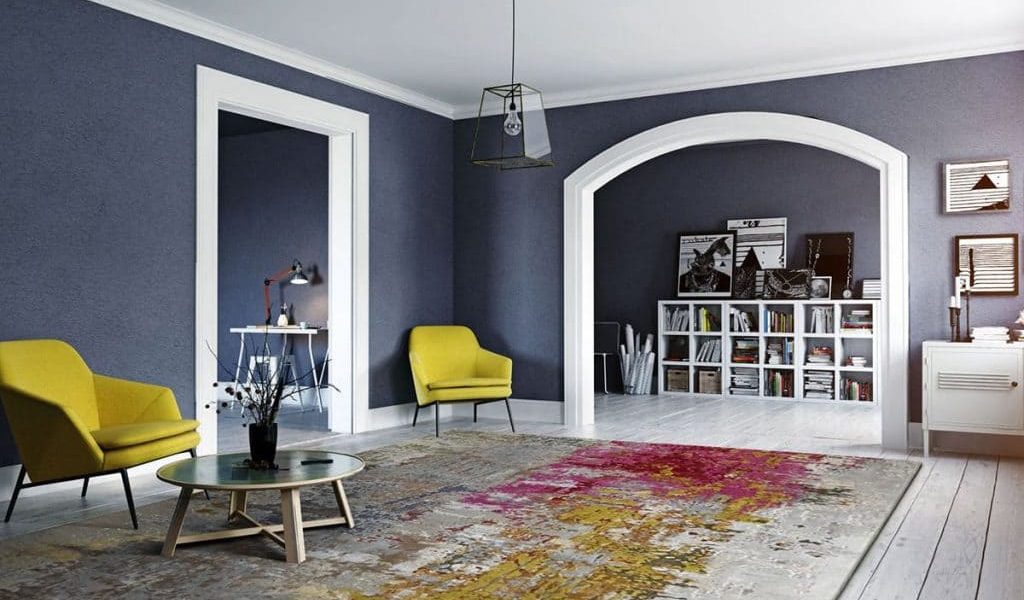February, especially if it has been particularly cold, marks the appropriate moment to discuss the centerpiece of any interior that prides itself on balancing beauty and comfort. Carpets not only provide warmth to a home but also offer a distinct opportunity for its inhabitants to express their true spirit. They serve as both a functional necessity and a canvas for personal expression, allowing individuals to convey their adventurous or conservative nature, carefree disposition, or inherent seriousness. Indeed, carpets possess the unique ability to imbue a space with personality, serving as the crucial first impression where individuals reveal a glimpse of who they are. However, the extent to which one is willing to take risks with carpet design varies, as not everyone is inclined to reveal so much about themselves.
Charles Rennie Mackintosh and the Birth of Modern Carpet Design
In the late 19th and early 20th centuries, Scottish architect Charles Rennie Mackintosh recognized a significant gap in interior design: the need for carpets that complemented the emerging architectural styles of the time. Mackintosh responded by creating designs that harmonized with the new spirit of interior design, employing smooth surfaces in neutral tones accented by borders of lines or checkerboard patterns. Concurrently, contemporaries such as Josef Hoffmann in Vienna and Frank Lloyd Wright in the United States echoed Mackintosh’s concerns, crafting geometric designs based on grids of dots, stripes, zigzags, and mazes.
The Bauhaus Influence and the Rise of Female Designers
The Bauhaus school in Germany later revived carpet design, with notable contributions from pioneering female designers like Anni Albers and Gunta Stölzl. Simultaneously, architect Eileen Gray, in the 1920s and 1930s, created carpets that visually complemented her architectural creations. Despite the often-overlooked contributions of these women, many of their designs are now being rediscovered, such as Charlotte Perriand’s Verité and Graffitti carpets, originally designed during her time in Japan in the 1940s and now produced by Cassina in collaboration with the French company cc-tapis.
Innovations of the 20th Century: Panton, Paulin, and Beyond
In the 1960s, designers like Verner Panton introduced psychedelic creations, ideal for applying to flat surfaces, while Pierre Paulin elevated carpets to new heights by adding support structures, transforming them into functional seating areas with backrests. This concept was further explored by designers like Ana Mir and Emili Padrós with their renowned Flying carpet. The evolution of carpet design continued, offering artists opportunities to explore diverse formats (rectangular, circular, square) and compositions ranging from austere geometric patterns to whimsical depictions of flora and fauna.
Beyond Functionality: The Emotional and Sentimental Value of Carpets
While carpets traditionally served the practical purpose of transforming cold spaces into cozy havens, as explained by designer Nani Marquina, advancements in technology have rendered this function obsolete. Today, carpets are valued more for their emotional and sentimental significance than their practicality. While they still serve as effective sound dampeners, their true worth lies in their design, which serves as a conduit for our own mental landscape, aiding in the selection of items that resonate with our tastes and inclinations. Handcrafted carpets also connect us with ancestral traditions, with their imperfections serving as a testament to human craftsmanship.
Exploring New Materials and Environmental Concerns
Though wool has historically been the primary material for carpet-making, various natural fibers have been utilized throughout history. In recent years, however, there has been a growing interest in environmentally friendly materials, particularly recycled PET plastic fibers. Notable examples include the Plastic Rivers collection by Álvaro Catalán de Ocón for the brand GAN, which represents the five most polluted rivers in the world. This project serves as a poignant commentary on environmental issues, prompting consumers to make more responsible choices.
Conclusion: Carpets as Artistic Statements
In conclusion, carpets have evolved from functional necessities to artistic statements, reflecting the shifting trends and sensibilities of their respective eras. From the pioneering designs of Charles Rennie Mackintosh to the contemporary creations of today’s designers, carpets continue to captivate and inspire, serving as a canvas for personal expression and a reflection of cultural and societal values. As technology advances and environmental concerns shape design preferences, the future of carpet design promises to be both innovative and sustainable, maintaining its status as a timeless and cherished element of interior decor.

